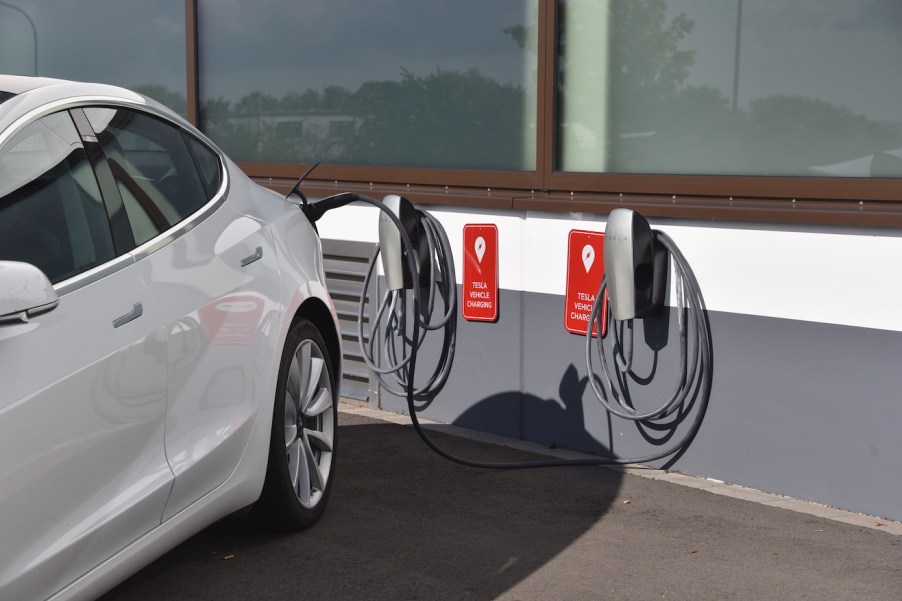
What Impacts an Electric Car’s Range?
Electric cars are getting more and more popular. So much so that the typical electric car terminology like “range,” “charge time,” and even “kilowatt-hour” is getting more ubiquitous as time goes on. However, not many consumers might know what kind of factors play into an electric car’s projected range. There’s a lot more to it than being able to keep your right foot off of the accelerator most of the time.
Real-world driving has a huge affect
While it’s easy to look at a Tesla Model 3’s EPA estimate of 130 MPGe (miles per gallon equivalent) in combined driving and think that it’s an amazing number, there are many factors that will lower it when it comes to real-world driving.
Speed
According to Charged Future, the faster your drive an electric car, the harder the motor has to work, which ends up killing the car’s charge. There’s no set percentage rate in how much a car’s gas mileage drops as the speed increases since each car has different aerodynamics, however, if we use the same example that Charged Future used, then you can see the difference.
In their example, the Tesla Model 3 Standard Range Plus has an EPA-estimated range of 240 when the car is traveling at 65 mph. But when the speed is increased to 70 mph and 75 mph, the range decreases to 232 and 231, respectively, which is a 3.4 and a 3.8-percent decrease in range.

Wind
If we were driving in that same Tesla Model 3, then another factor that would work against the car’s electric range is the wind. More specifically, the wind that’s coming at the car, also known as a “headwind.” As the rate of a headwind increases, the harder the motor has to work, which in turn decreases the car’s range.
Weight
The car’s weight plays a factor in the situation as well. You can thank gravity for that — or perhaps the large meal you ate at lunch — as the more loaded the car is with passengers and their stuff, the less range you will have as well.

Tire traction
Have you ever wondered why most hybrid and electric cars use low-rolling-resistance tires? That’s because the less resistance a tire has when moving across the pavement, the more efficient an electric car will be since it’s doing less work. Additionally, tires that are not inflated properly or have poor traction due to being worn out will make an electric car less efficient as well.
Cold weather
In case you haven’t heard, electric vehicles don’t like cold weather. They are made to perform best in neutral temperatures and excessive heat and cold can have a great effect on them. So if you live in an area where it snows in the wintertime or at least gets below 50 degrees Fahrenheit, then you will definitely notice a drop in the car’s range and it will decrease more the colder it gets. According to AAA, electric cars can experience a range loss of 12 percent in 20-degree temperatures (Fahrenheit).

It’s more than just your right foot
As we can see, there are a few different factors when it comes to what impacts an electric car’s range. Sure, your right foot has a lot to do with it, but the driving conditions in which you drive an electric car through could have a greater effect. Just try not to drive your Tesla Model 3 through Canada during a Winter storm and you’ll probably be OK.



